Have we mentioned how few cyclists we’ve seen cycling the Southern Tier? We’ve ridden for days on end without seeing anyone. Yet this route, which was first mapped by the Adventure Cycling Assocation in 1990, is supposed to be one of its most popular. Where was everyone?
Back home during the summer months you are likely to see plenty of people on two wheels around most UK towns and villages, but so far four states had provided just a handful or riders. If it was disheartening for us can you imagine what life is like being an avid cyclist living out here? Well later today we found out…

Main Street Oberlin was like so many we have been through before – deserted and seemingly down at heel. It was disheartening to see so many closed businesses. Once again the population was on the decline and our chances of finding somewhere for breakfast seemed slim.
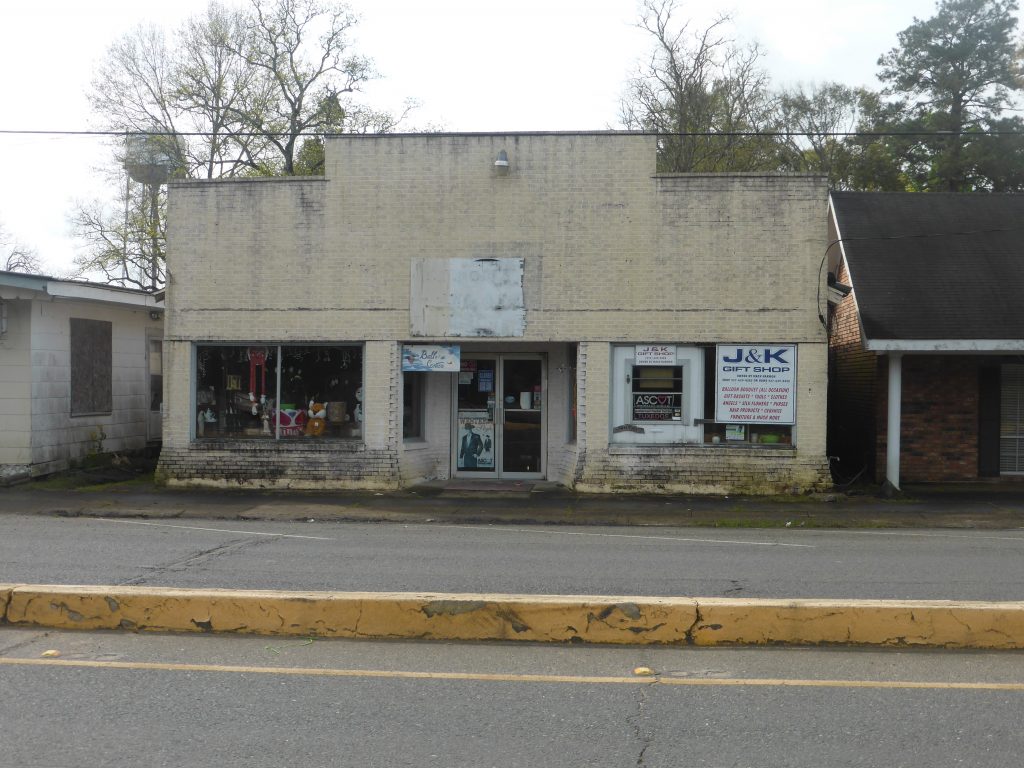
We tried two diners, but both were closed, so Terry initiated our tried and trusted litmus test – he looked for a line of parked pick-up trucks. As if by magic the Landreneaus Cafe and Grocery appeared which specialised in smoking meats on the premises. We’d never seen so many bits of an animal, smoked turkey necks, wild boar sausages, pig tails, ham hocks and Tasso ham, a Cajun speciality made from a hog’s shoulder cured briefly in salt and rubbed with a spice mixture including cayenne peper and garlic and then hot-smoked.
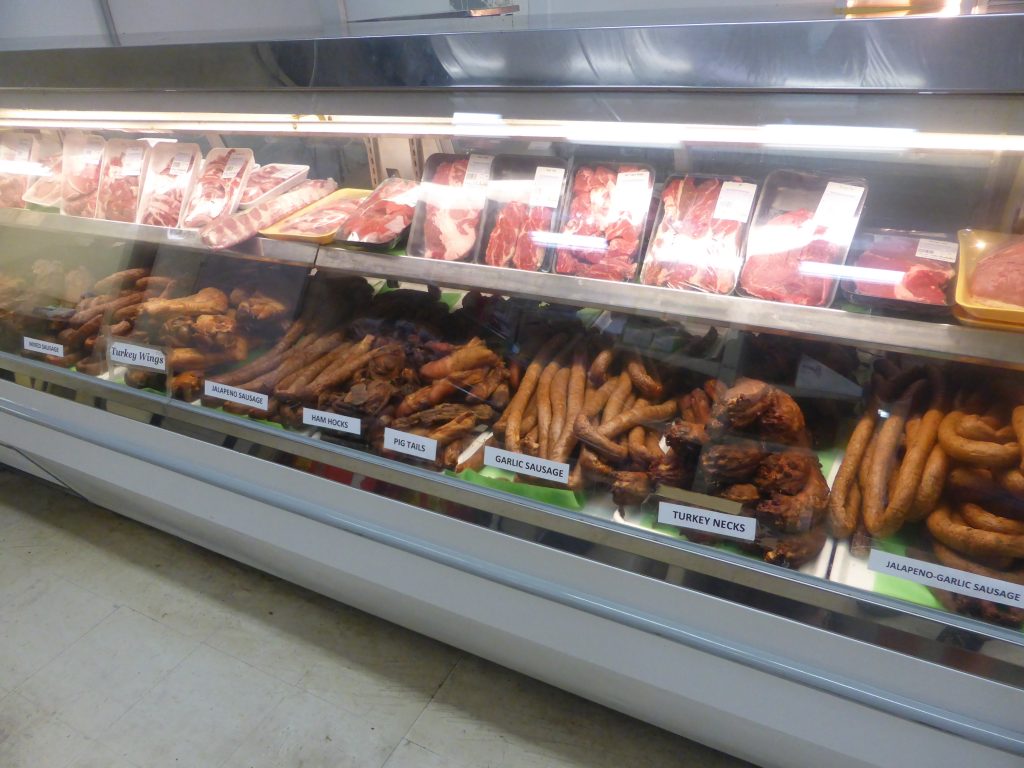
I opted for breakfast with a Cajun twist – Boudin sausage – and the waitress also brought me over some ‘cracklin’ very much like pork scratchings but with different spices. Oddly we didn’t see any of the crawfish that we’d cycled past endlessly on the way into town. The waitress told us that round here most people call them mud bugs.
“It was the sort of weather Terry said his dear old mum would have called a good drying day”.
Outside we bumped into Jimmy, a hunter, who’d just arrived for breakfast. He showed us pictures of white tailed deer with up to 26 prongs on their antlers and then some of the local wild boar he’d caught.
Jimmy told us boar cause chaos in the crawfish ponds, so he is brought in to hunt them – with dogs. He said it was the only way to hunt for animals that would hide away in the thickets and turn and charge a human en masse if startled. It turned out that the egrets and turtles we’d seen around the crawfish ponds were the least of the farmer’s worries.
Jimmy said once we crossed the Calcasieu River, about three miles out of town, we’d see no more crawfish ponds and he was 100% right. The mud bugs had gone to be replaced with woodland – and we finally had a good tailwind. It was the sort of weather Terry said his dear old mum would have called a ‘good drying day’.
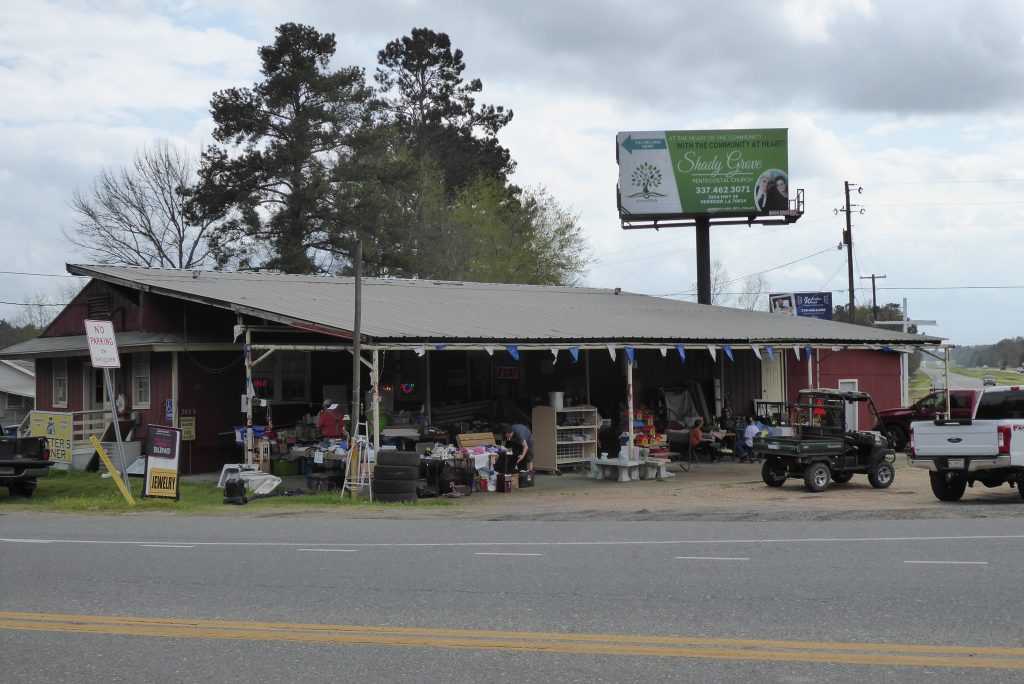
We must have been enjoying the changes as we just yacked away and 25 miles along the mostly straight road towards DeRidder just flew by. The small communities of Mittie and Shady Grove came and went and Terry theorised about the differences between dogs on the Trans Am and the Southern Tier.
Terry explained that on the TransAm as soon as you’d raised your arm, to grab pepper spray, an airhorn, or in our case a Dog Dazer, the pursuing hound would usually back off as they knew from experience what was coming. Here the Southern dogs seemed ignorant of such devices meaning Terry more often had the satisfaction of using his weapon as he drifted out to the middle of the road to give extra space and time should a set of teeth suddenly take a fancy to his legs.
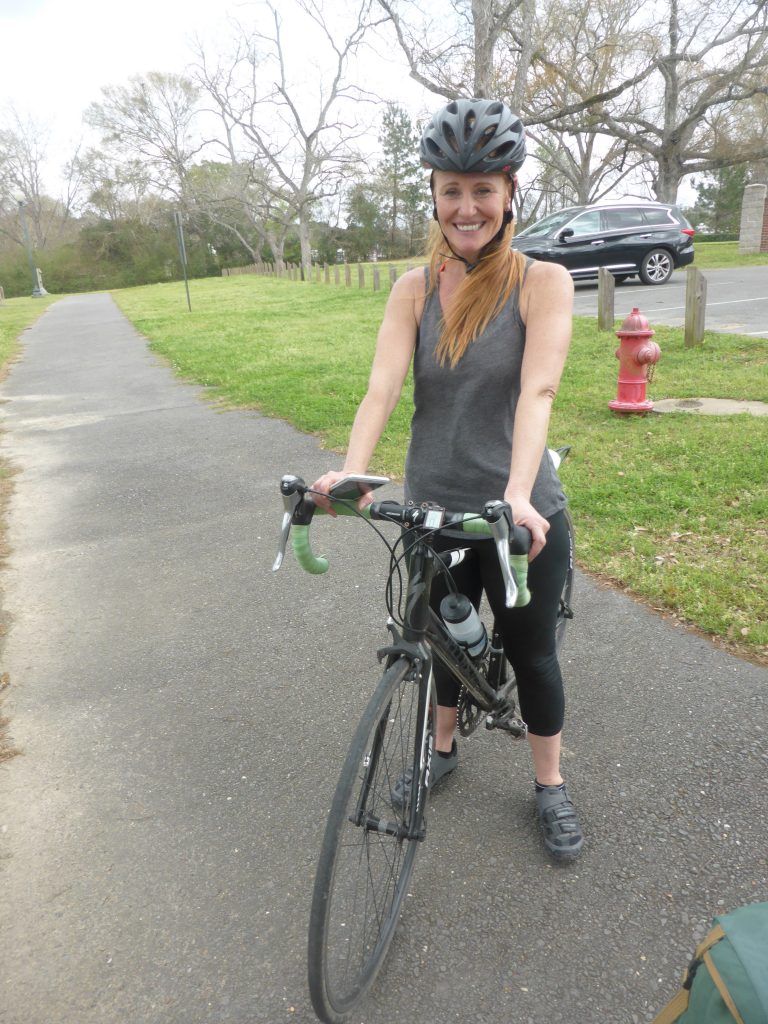
In DeRidder we came across cyclist Schenley Green who was so excited at spotting other cyclists she almost exploded with joy. Within seconds Terry and I were the stars of some kind of Facebook live event as she got out her phone and began interviewing us for ten minutes about our ride.
“Schenley Green seemed to be the only cyclist in De Ridder”.
Then followed a rapid resume of her life from her service in the military through divorce, triathlon competitions and her ongoing mission to help people with PTSD, depression and at risk from suicide. She also seemed to be the only cyclist in De Ridder.
“Nobody goes out around here,” she explained, highlighting problems with obesity. “And the drivers are crazy.” It seemed most of her cycling involved going up and down the main roads since there were no country lanes – and she avoided some routes due to dogs.
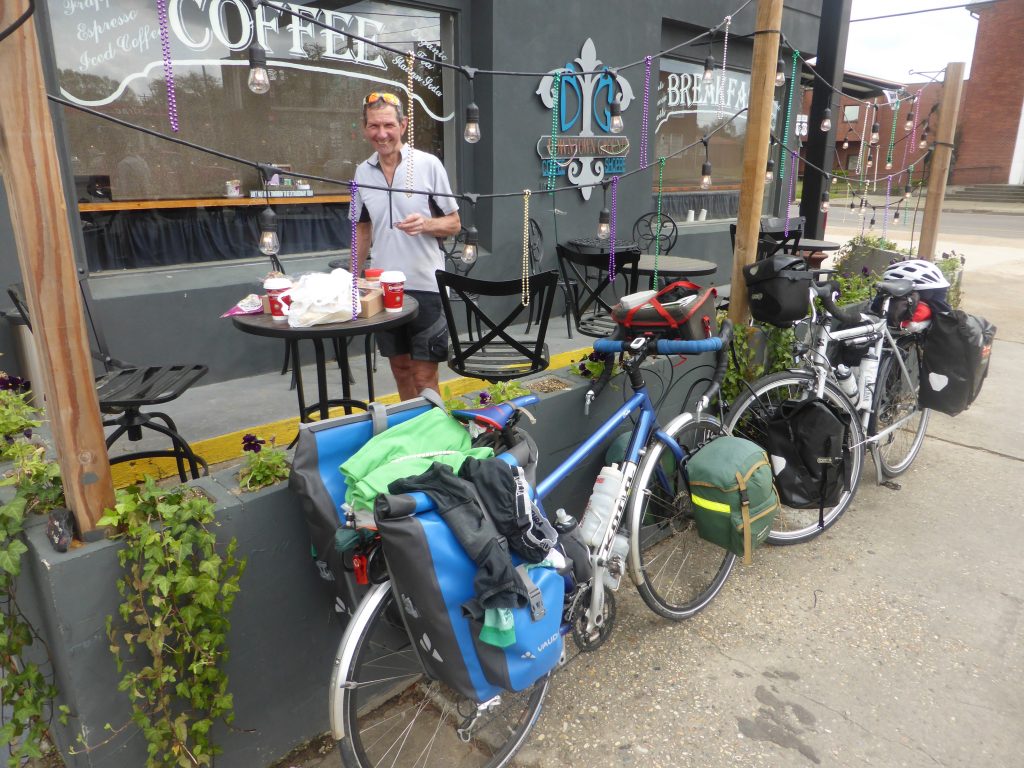
After being bombarded with Schenley’s enthusiasm she then told us the best place in DeRidder to get coffee, hopped on her bike and led us round the streets to a local coffee house, Downtown Grounds, but sh’ed been chatting so long it had just shut (on a Saturday lunchtime!). Even so they were happy to let us sit at the tables outside and even gave us free boxes of buns.
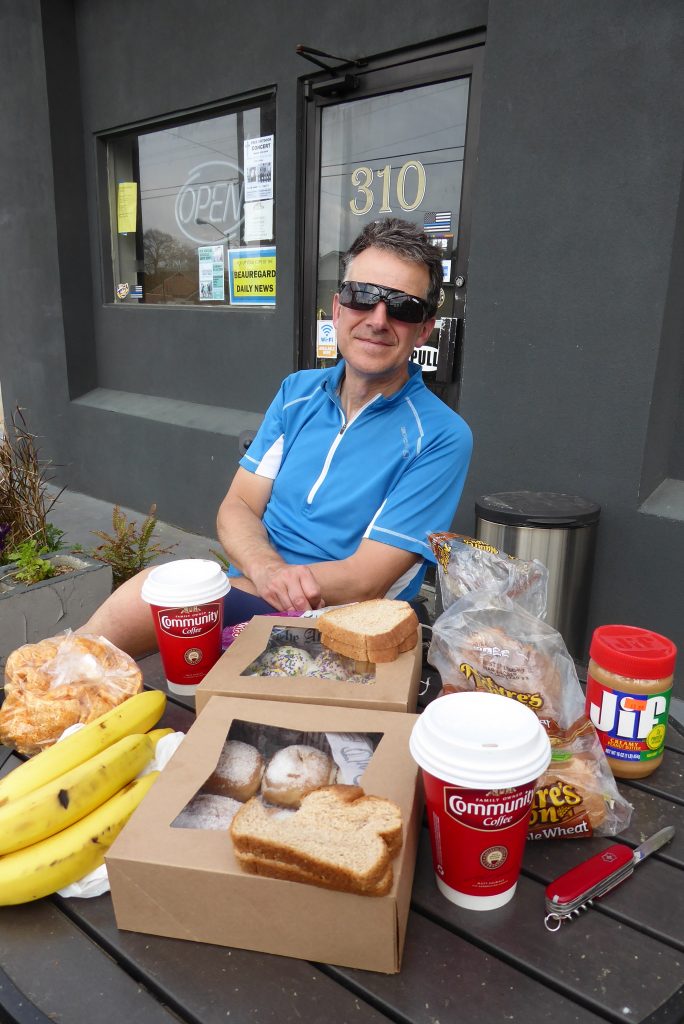
Terry been carrying a large loaf and a jar of peanut butter around for several days now and we decided we really should eat them before the bread went out of date … in two week’s time! It really makes you wonder what they put in the food, but we eagerly wolfed down peanut butter sarnies and enough buns calories to fuel three transcontinental rides.
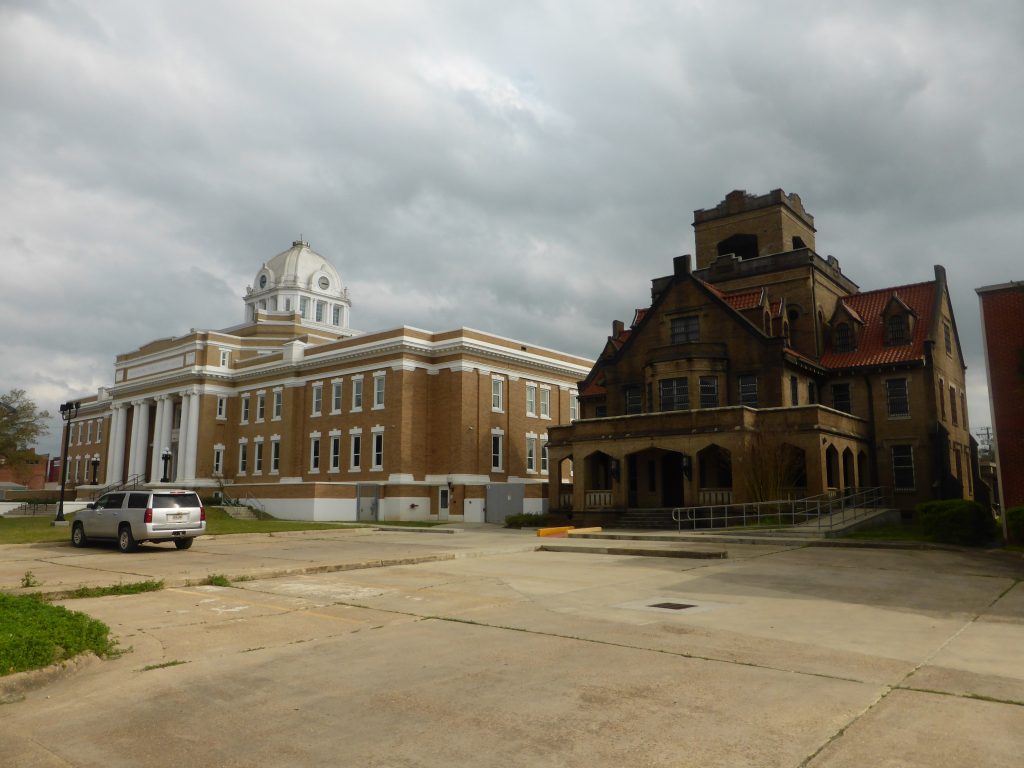
We then managed a quick whistlestop tour of the town, taking in the courthouse and gothic prison, before pushing on to Merryville. Just before reaching town we stopped at the Atakapa Trace Junction where a brown sign parked where the trails of two ancient tribes of the Atakapa people, the Eastern Atakapa or Hiyekiti Ishak (The Sunrise People) and the Western Atakapa or Hikike Ishak (The Sunset People) used to cross.
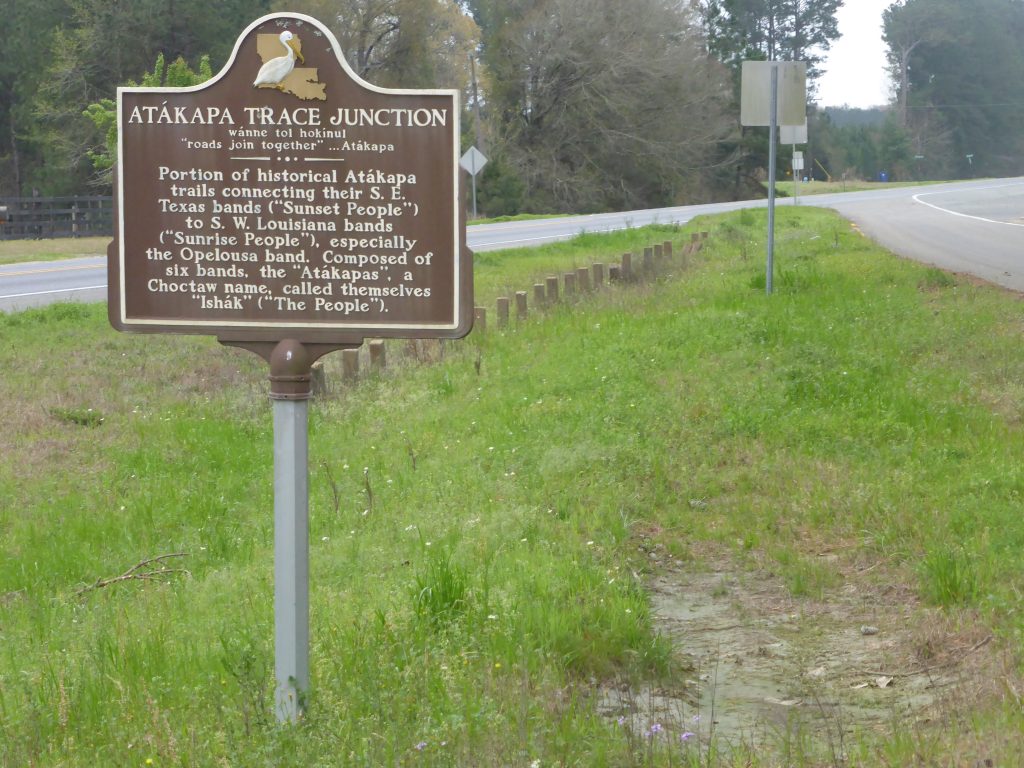
Once again it demonstrated how much history there had been in this country long before white settlers arrived. A little research discovered the Atakapa were the indigenous people from the Southeastern Woodlands and lived along the Gulf of Mexico. Divided into several different bands in the late 18th century they were decimated by disease and ceased to function as a tribe, but it seems some of their descendants still live in Louisiana and Texas and in 2006 the Atakapa-Ishak met as one nation.
That night we were guests of the Merryville Historical Society. We were greeted in the wooden built museum by husband and wife team and curators of the museum Eddie and Renee, who immediately offered us cold cokes and Dr Peppers (we’d put in quite a push on the bikes to get there in time and were parched) and then proceeded to spend the next three hours chatting about local history.
They explained that following independence in 1776 this area had been fought over by the Spanish and the US, so in a bid to solve the problem they created a ‘Neutral Zone’ where neither side had jurisdiction. All was good and the fighting stopped although people then realised there were no enforceable laws in that zone and the area quickly became full of casinos and bars and ne’er-do-wells avoiding capture.
The town, which had originally been called Hall Street, had grown up around the lumber business with timber being shipped down river to be processed in Merryville’s sawmills. But when the wood ran out (which also no doubt also hastened the Atakapa’s demise) and the railway junction was established in De Ridder, the town went into decline. Hall Street lost its city status and was re-named Merryville – because people came here to be merry attracted by all the bars, liquor stores and places of ill repute. Bizarrely it seems that nowadays you are allowed to sell beer in the town, but strictly no liquor. How times have changed.
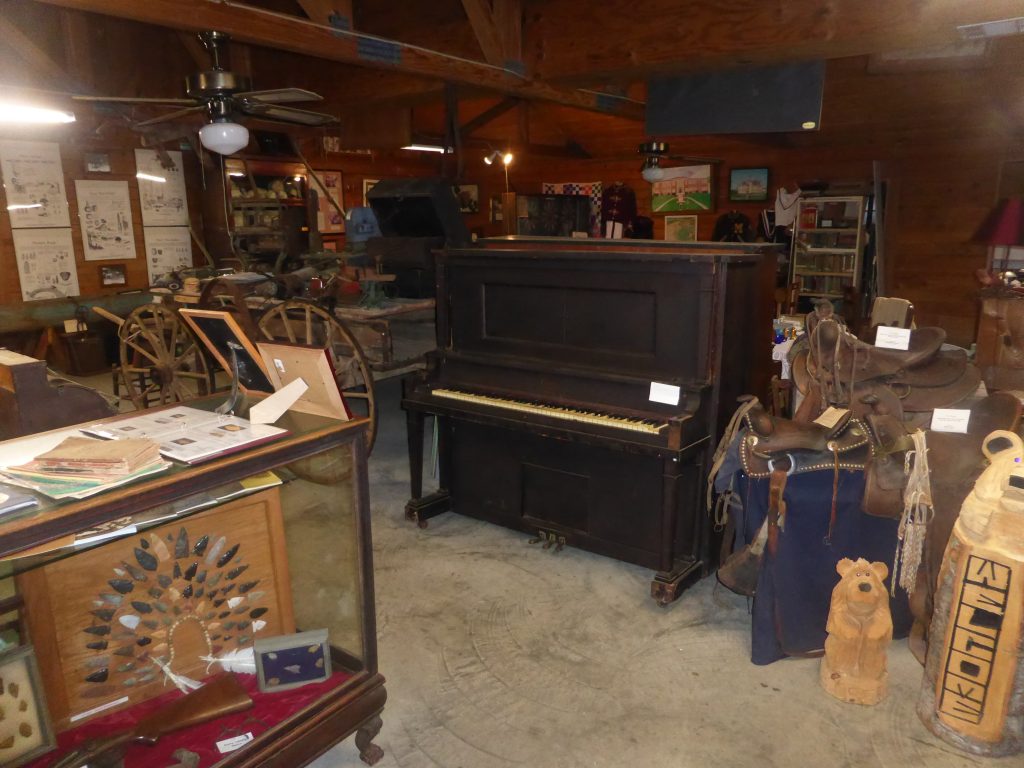
Over the next few hours we discussed everything from the Iraq and Vietnam wars, gun control, logging, local history, family and the contrasts between living in the UK and Louisiana.
Renee, who was keen to retire and spend more time at the museum – showed me her three favourite artefacts – a well bucket once used by Eisenhower, a Stars and Stripes which had been flying in the cemetary during Hurricane Rita, which had tied it into knots – and a blown glass with water inside – an early form of sprinkler. We also got a fascinating insight into the American relationship with guns.
They both seemed to be sensible, reasonable, lovely everyday folk, but Eddie told us he had five guns in his bedside drawer, a shotgun behind the bedroom door and about twenty others locked away. All loaded. Not seeming quite so normal now.
“Do you have them because you are afraid someone us going to break in?” we asked. His reply was that he felt safe because the guns were there and went on to explain that if someone entered his house, and he felt threatened in any way, he would shoot to kill. Not stop or maim, kill. I think at that point Terry and I edged backwards a few feet and kept our hands where Eddie and Renee could see them.
“Fearful the government would be taking away what they saw as their birthright they said people were likely to be buying more guns in case there was a change in the law”.
Eddie’s reasoning was that if you injured that person they can possibly sue you for loss of future earnings! Meanwhile if you keep it simples and kill them outright it’s job done, and you won’t hear the other side of the story. Fearful the government would be taking away what they saw as their birthright they said people were likely to be buying more guns in case there was a change in the law. Terry decided, quite sensibly, not to ask him how he squared that with his religious beliefs.
The conversation flowed easily and they were fascinating hosts and we talked about Trump and Major League Football (they were huge fans) before Renee’s daughter and grandchildren arrived and we got an insight into how different growing up in Louisiana is to the UK.
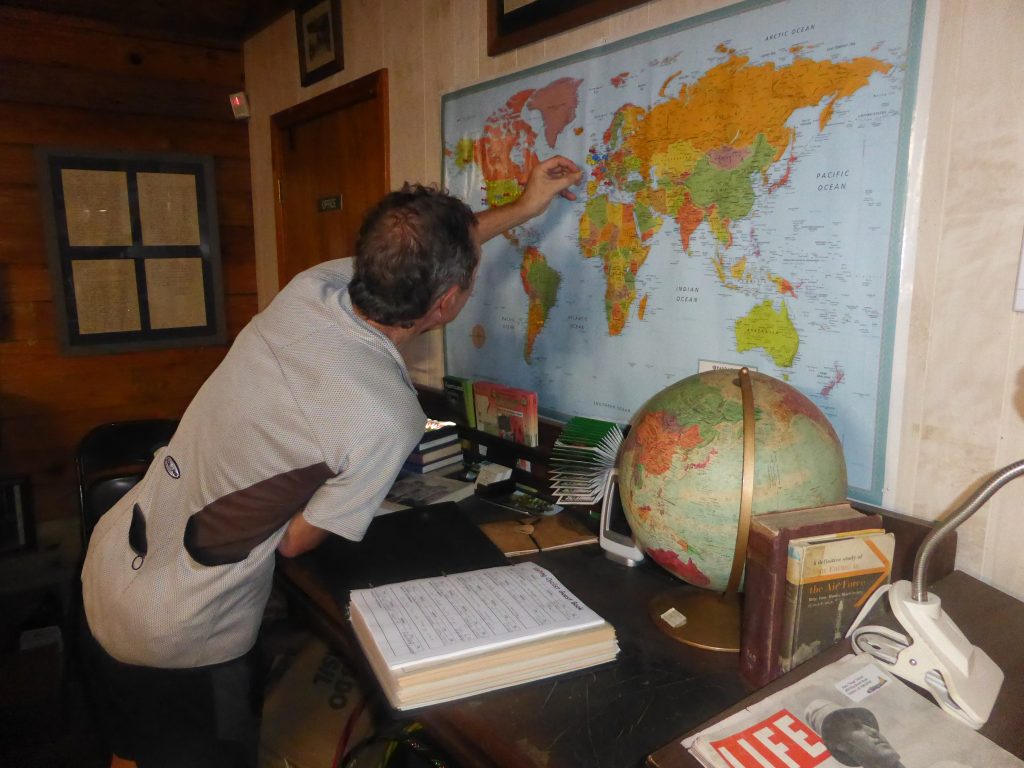
The children clearly spent a lot of time playing outside and her grandson had a jar with a captured lizard and frog in it. They talked of playing in creeks and mud holes and a life that meant no one wore shoes much at all. They talked completely naturally of living close to dangerous predators like crocodiles and Eddie explained how occasionally he had to catch and shoot ones that came too near the house. We decided that explaining we also occasionally had problems with troublesome pigeons and squirrels didn’t bear comparison.
They were also able to throw light on why we’d seen so many abandoned homes across rural America – some with the cars still on the driveway, as if the owner had just locked up and walked away, never to return. It turned out that many of these were stuck in legal limbo with families arguing over the inheritance while homes and vehicles, which had once been someone’s pride and joy, were slowly sucked back into the undergrowth.
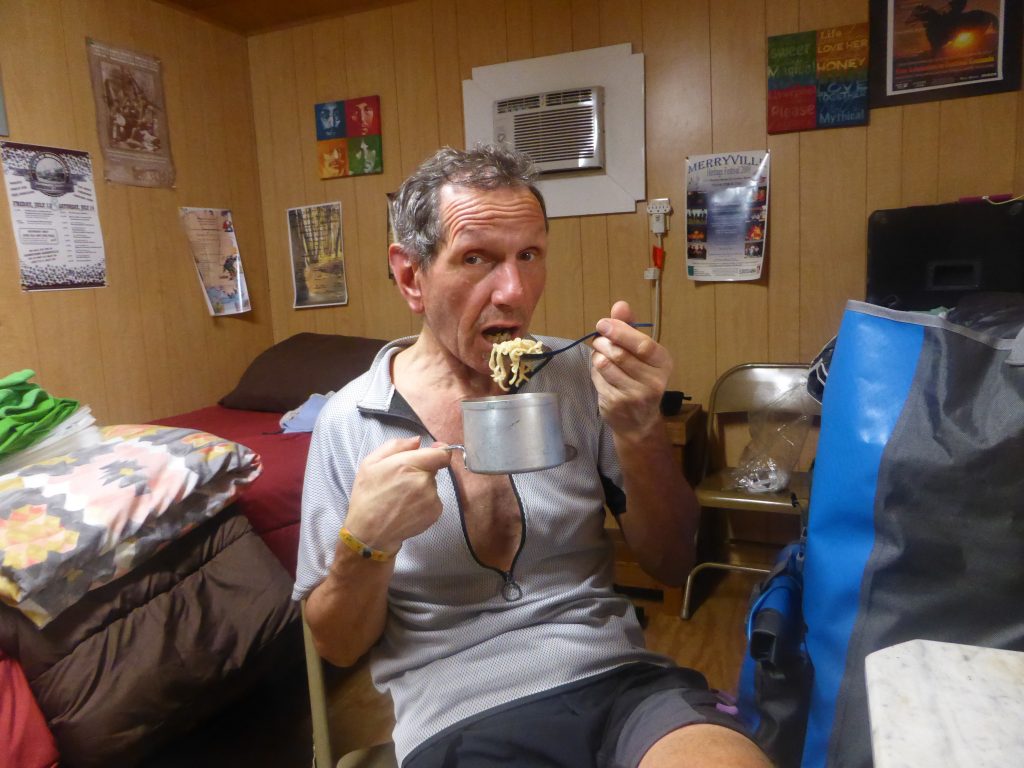
We spent the night in the museum’s cabin, which had been specially set up for cyclists passing through (a bargain at $10 a night), examined posters of the annual Merryville music festival which is held at the end of March, boiled up our ramen noodles, took showers, washed our clothes and then crashed.
After so much conversation about guns and self protection we realised our only defence against intruders was to squirt water at them from our bike bottles. Fortunately our only visitor was a huge bee-like bug attracted by the lights. So Terry got out his AK47 and blew him away before the lawyers could get a sniff at us. That’s justice – Merryville style.
Today’s miles: 57.14
Total miles since Anastasia State Park: 1,000.39
